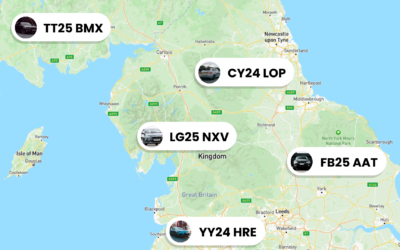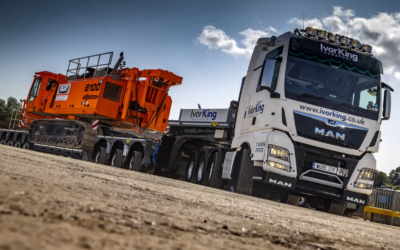Predictive Maintenance for Fleets: Cut Downtime with AI
Introduction — What Predictive Maintenance Is and Why Fleets Need It
Defining predictive maintenance for fleets
Predictive maintenance for fleets uses vehicle data and analytics to anticipate component failures before they happen. Rather than relying on fixed service intervals (*preventive maintenance*) or waiting for breakdowns (*reactive maintenance*), predictive approaches use engine fault codes, sensor readings and usage patterns to forecast faults. For fleet managers, that means fewer surprise repairs, smarter scheduling and better fleet availability. Predictive maintenance shifts maintenance from being calendar-driven to *condition-driven*, which is a game‑changer for uptime and cost control.
The business case: cost, safety, and uptime
The benefits are straightforward: lower unplanned downtime, reduced repair costs, longer asset life and improved safety. When vehicles are available for scheduled work rather than emergency repairs, productivity climbs and customer service improves. Use KPIs like mean time between failures (MTBF), mean time to repair (MTTR) and maintenance cost per mile to quantify impact and justify investment in analytics and telematics.
When predictive maintenance makes sense
Predictive maintenance is particularly effective for medium-to-large fleets, high-utilisation assets, vehicles with high repair costs or complex systems (e.g. refrigerated units, heavy trucks). If you already collect telematics and fault-code data, or if unplanned downtime is a significant cost centre, you’ll likely see strong ROI from predictive approaches. If you’re still building data collection practices, start small with a pilot focused on your highest‑value asset class.
Data Inputs — What You Need to Predict Failures
Essential telematics and sensor data
Accurate predictions rely on quality inputs. Core signals include OBD-II/CAN bus engine fault codes, RPM, coolant and oil temperature, vibration and RPM patterns, fuel consumption, idle time and odometer. Driver behaviour metrics such as harsh braking or over‑revving can also be early indicators of component stress. The more relevant signals you capture, the more precise your model’s forecasts will be.
Supplementary contextual data
Context improves predictions. Route profiles (urban vs motorway), ambient weather, payload and duty cycle affect wear rates. Historic maintenance records and parts replacement logs help models learn failure patterns. Where possible, enrich telematics with operational data from your scheduling or logistics systems — cross-referencing increases model accuracy and reduces false positives.
Ensuring data quality and integration
Poor data kills models. Expect missing values, inconsistent sampling frequencies and different units across vendors. Normalise timestamps, standardise units and implement basic validation at ingestion. If you need guidance on proving telematics value to stakeholders, see our Telematics ROI guide: Telematics ROI: Step-by-Step Guide for Fleet Managers. Also consider how this data will tie into your maintenance system — a solid integration plan is essential.
Technology & Models — How Predictions Are Made
Modeling approaches and algorithms
You can implement predictive maintenance with several approaches. Simple *rule-based* systems trigger alerts on threshold breaches (e.g. coolant temp > X), while statistical models detect trend deviations. Supervised machine learning (classification/regression) learns from labelled failure events to predict remaining useful life (RUL), and unsupervised *anomaly detection* flags unusual patterns. Each has trade-offs: rules are simple and explainable; ML offers higher accuracy but needs labelled data and governance.
Edge vs. cloud processing and real-time needs
Decide where to compute predictions. Edge processing (on-vehicle devices) reduces latency and bandwidth needs for real‑time alerts, while cloud processing enables heavy training, cross-fleet pattern detection and richer historical analysis. Many fleets use a hybrid model: lightweight anomaly detection at the edge, with deeper model training and batch scoring in the cloud.
Vendor solutions vs. in-house development
Choosing between a vendor and in-house build is a strategic decision. Vendors accelerate time-to-value and provide proven models and dashboards; in-house gives you full data control and customisation. Consider your in-house data science maturity, integration complexity and need for bespoke predictions. If you want a fast route to results or are evaluating vendors, Book demo with Traknova to see an integrated predictive solution in action.
Implementation Roadmap — From Pilot to Production
Designing an effective pilot
A focused pilot de‑riskes rollout. Pick a vehicle class with frequent failures or high uptime impact, define a 3–6 month timeline, and set success metrics like reduced unplanned downtime and improved technician utilisation. Ensure you have baseline KPIs for comparison and a clear data collection plan — including diagnostics, telematics frequency and maintenance logs.
Integrating with maintenance workflows and CMMS
Predictions must feed your work-order system to be useful. Integrate alerts directly into your CMMS so predicted faults create conditional work orders with priority levels, suggested parts and technician instructions. This reduces friction and ensures technicians get actionable tasks rather than raw alerts. If you’re standardising preventive processes first, our Preventive Maintenance playbook can help: Preventive Maintenance for Fleets: A Manager’s Playbook.
Change management, training, and governance
Operational success depends on people. Train technicians to trust and act on predictions, establish SOPs for triage, and define data governance (who owns models, who approves alerts). Start with a small group of champions, iterate on alert thresholds and build confidence with demonstrable wins. Midway through your transformation, if you’d like a tailored walkthrough, you can Book demo to see how Traknova integrates predictive alerts into day-to-day workflows.
Measuring Impact and Scaling Up
Calculating ROI and TCO for predictive maintenance
To build a business case, include components such as avoided breakdown costs, reduced towing, less overtime, lower parts spend (through timely fixes), and improved utilisation. Offset these savings against software, hardware, integration and ongoing model maintenance costs. Conservative pilots often show payback within 6–18 months for the right asset classes.
Monitoring KPIs and continuous improvement
Track MTTR, MTBF, percentage of unscheduled downtime, maintenance cost per mile and prediction precision/recall. Use these metrics to refine models and adjust thresholds. Continuous retraining with fresh failure data prevents model drift. Also link outcomes back to operational changes — for example, does reduced idle time correlate with fewer engine issues?
Scaling across fleet and compliance considerations
When scaling, standardise data schemas, enforce vendor SLAs and ensure consistent device provisioning. Be mindful of data privacy and regulatory requirements for driver and vehicle data; implement role‑based access and encryption. Consider pairing predictive maintenance with other fleet initiatives (like telematics-driven driver coaching or electrification strategies) to amplify ROI — see our guides on fleet electrification and smart routing for complementary benefits: Fleet Electrification: Practical Roadmap for Managers and Smart Routing & Driver Coaching to Cut Fleet Fuel Costs.
Conclusion — Make Downtime Predictable, Not Acceptable
Predictive maintenance for fleets moves you from firefighting to foresight. By combining quality telematics, contextual data and the right modelling approach, you’ll reduce unscheduled downtime, cut costs and increase asset availability. Start with a narrow pilot, prove the KPI improvements, and scale with disciplined data governance and operational integration. If you’re ready to see how predictive maintenance can work for your fleet, Book demo or contact our team for a consultation at Contact us — we’ll help map a practical rollout tailored to your operations.
FAQs
How is predictive maintenance different from preventive maintenance?
Predictive maintenance uses live data and analytics to forecast failures; preventive maintenance follows scheduled intervals regardless of condition. Predictive reduces unnecessary services and targets issues earlier, which saves cost and improves uptime.
What data do I need to start?
Start with OBD/CAN fault codes, odometer, engine temperature and basic telematics (location, speed, idle time). Add maintenance history and route context as you go — the richer the dataset, the better the predictions.
Can I run predictive models without data science resources?
Yes. Many vendors provide turnkey predictive maintenance modules that require minimal in-house data science. If you prefer control, you can build models internally, but that needs labelled failure data and ongoing model care.
Will predictive maintenance work on electric vehicles?
Absolutely. EVs have different failure modes (battery, BMS, thermal management) but the predictive approach — monitoring key signals and behavioural patterns — still applies. For guidance on electrification alongside predictive strategies, see our fleet electrification resources: Fleet Electrification: TCO & Charging Guide for Directors.
How do I measure success after rollout?
Compare pre-pilot and post-pilot KPIs: unscheduled downtime hours, MTTR, maintenance cost per mile and technician productivity. Also monitor model accuracy metrics so you can reduce false positives and build trust with technicians.
Ready to reduce downtime and make maintenance proactive? Book a personalised walkthrough to see predictive maintenance in action — Book demo. If you’d like a direct conversation, Contact us and we’ll set up a consultation tailored to your fleet size and asset mix.
We’d love your feedback. Did this guide answer the questions you had about predictive maintenance for fleets? Share your thoughts below and help other fleet managers by sharing this post on social media. What’s the single maintenance issue that costs your fleet the most today?










